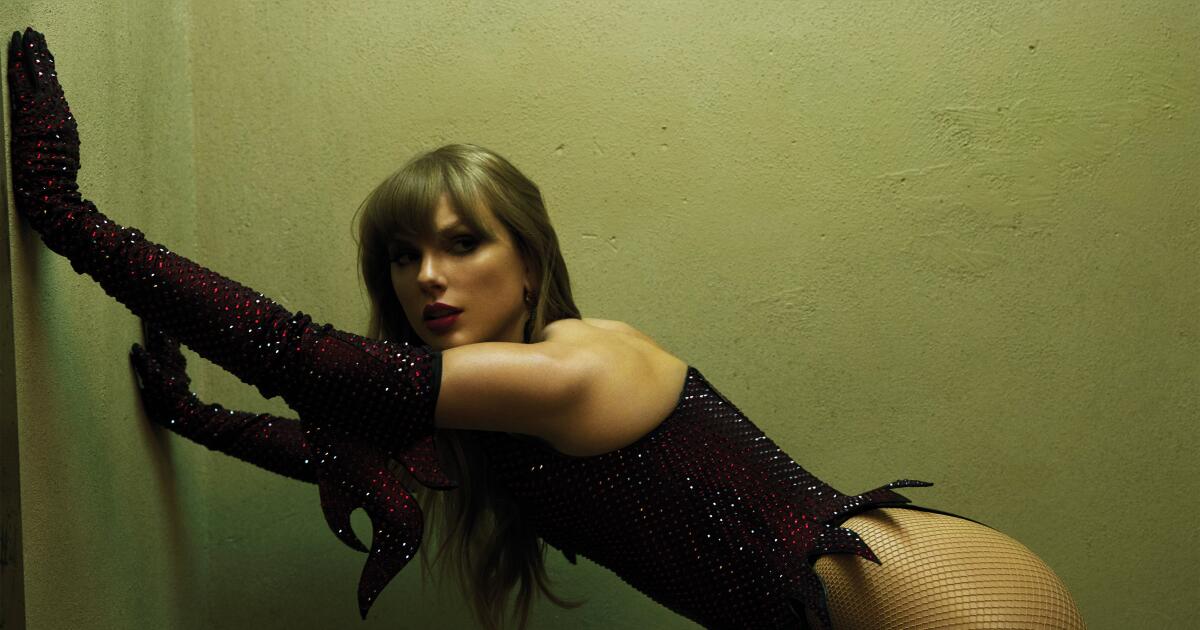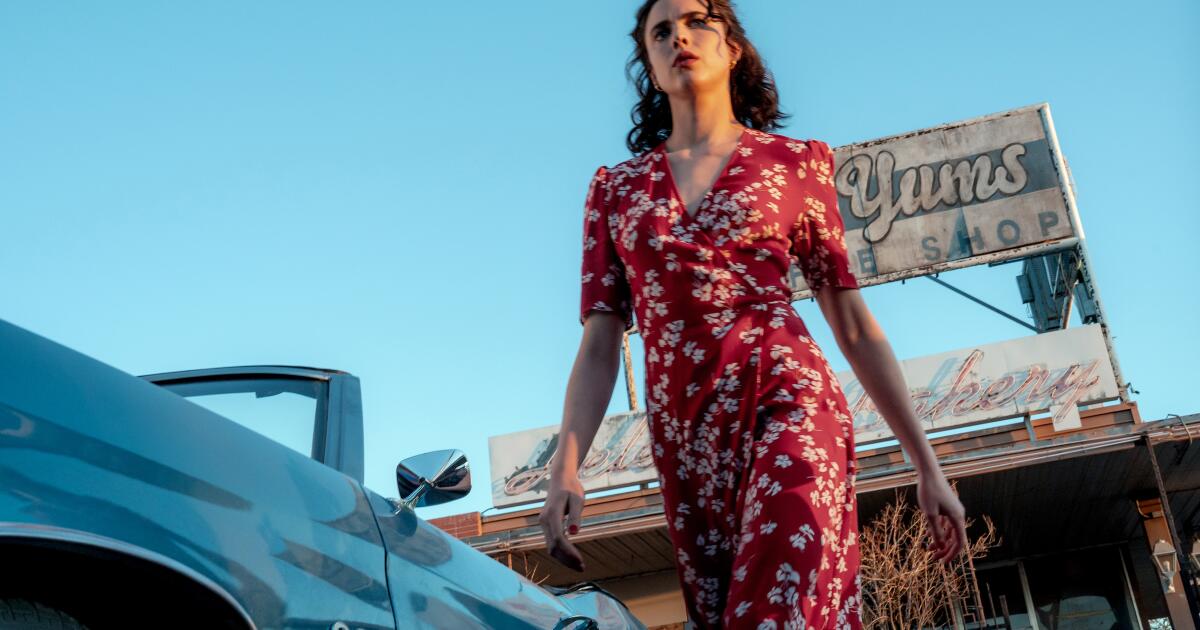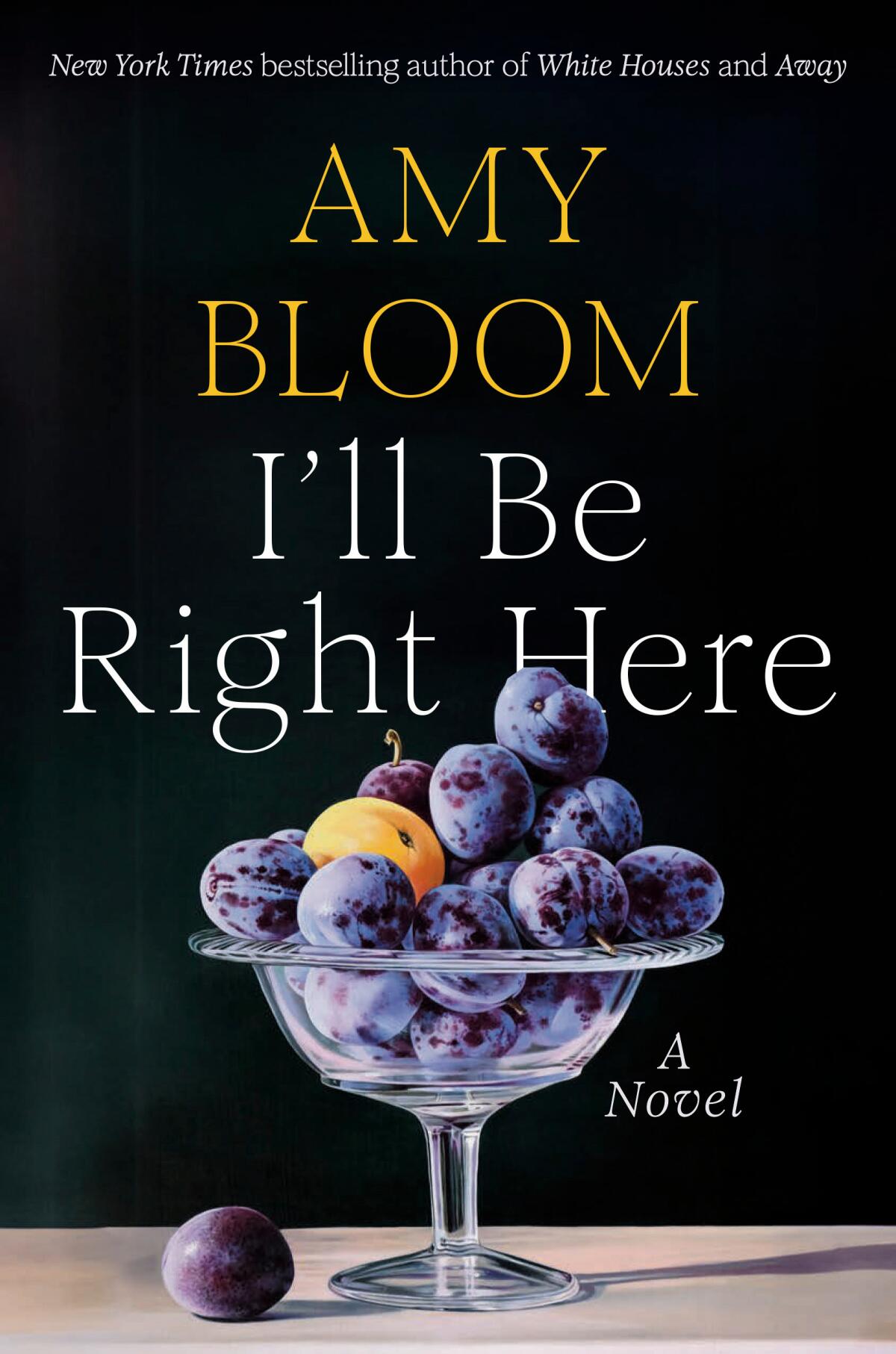Taylor Swift’s ‘The Life of a Showgirl’ songs: What to listen to next
For better or worse, “The Life of a Showgirl,” Taylor Swift’s 12th studio album, is unlike anything the megastar has done before.
On the 12-track album, which dropped Friday to mixed critical reception, Swift is uncharacteristically risqué and, for possibly the first time, indulges her inner theater kid without reservation. In that sense, much of the pop record is daringly new.
Still, on each track are sonic echoes from the 14-time Grammy winner’s decades-spanning discography — from the verve of “Reputation” to the romantic whimsy of “Lover.”
Swifties are sure to be playing “The Life of a Showgirl” on repeat today. But if that gets a bit tiresome after the 13th time, here is a list of Swift sister songs to try instead, based on your favorite track from the new album.
(Some song pairings are based on sound, while others are based on shared themes.)
“The Fate of Ophelia”
“Showgirl’s” opening track has a sultry groove and low pulse that could easily be the soundtrack to a flirty nightcap or the series finale of a dark comedy.
Find the same alluring melody with an extra dash of spice in “I Can See You,” a vault track from 2023’s “Speak Now (Taylor’s Version).” And for bonus points, head to the music video for a dose of the Swift-signature theatricality dripping from “The Life of a Showgirl.”
“Elizabeth Taylor”
This allusive track boasts the album’s most sweeping chorus, anchored by Swift’s mesmeric alto and a masterfully orchestrated rhythm that uses moments of quiet to its advantage.
“Reputation‘s” slow-burn hit “Don’t Blame Me” follows a similar playbook, using a killer choral backing to achieve the same hymnal quality that complex vocal layering creates on “Elizabeth Taylor.”
Plus, both songs share a secret weapon: Swift’s irresistible enunciation of the word “baby.”
“Opalite”
An immediate inductee into Swift’s “Glitter Gel Pen” song Hall of Fame, “Opalite” is for dancing around your kitchen with a glass of orange wine in hand.
Fuel that infectious joy with the most twirl-worthy — and arguably most underrated — track of Swift’s career, “Sweeter Than Fiction.” Swift released this shimmering tune in 2013 for the “One Chance” film soundtrack, and true to its title, it is sweet as a peach.
Honorary mention: If you prefer a tambourine to a synth, try “Lover” B-side “Paper Rings,” perhaps more suitable for kick-stepping than spinning but nonetheless another “Opalite” lookalike.
“Father Figure”
The natural choice here would be “The Man,” another song wherein Swift adopts a masculine persona to prove just what a boss she is.
But I have no more sage advice than to head to George Michael’s original “Father Figure” (1987), which recently got a streaming boost after being featured in the 2024 erotic thriller “Babygirl.” Swift used an interpolation of Michael’s song in her track of the same name — with a gleeful sign-off from the late singer’s estate.
“When we heard the track we had no hesitation in agreeing to this association between two great artists and we know George would have felt the same,” George Michael’s estate wrote Thursday on his official Instagram.
“Eldest Daughter”
It doesn’t feel entirely fair to compare these two — especially given one of them has Phoebe Bridgers and the other one has the line “I’m not a bad b—, and this isn’t savage” — but “Eldest Daughter” and “Nothing New (Taylor’s Version)” share the same grief for a younger self that a woman in her 20s knows best.
If you need a good cry, these two are here for you.
“Ruin the Friendship”
Speaking of debilitating nostalgia, this one might feel a bit out of place in this album’s universe, but it’s a heartrending gem nonetheless.
For a similar remorseful trip into the past, minus the boppy bass line, try “We Were Happy,” a vault track from “Fearless (Taylor’s Version)” about young love lost.
“Actually Romantic”
While this alleged Charli XCX diss track may be more scathing than usual for Swift, the singer is no stranger to shade, as evidenced in “Reputation” B-side “This Is Why We Can’t Have Nice Things” — a perfect pairing for “Actually Romantic.”
In both songs, Swift is unapologetically petty, offering her foes a metaphorical bouquet of flowers thick with thorns.
These tracks aren’t everyone’s speed, but every misfit has its fans. And in the case of “Actually Romantic,” Nicki Minaj seems to be one of them.
“Wi$h Li$t”
Showcasing this album’s gentler side, “Wi$h Li$t,” which Swift said may be her personal favorite, is a tender tribute to her fiancé Travis Kelce, backed with ethereal synth sounds and soft vocalization from a clearly smitten showgirl.
“I just want you” is also the mission statement of “Glitch,” a short and sweet pop number from 2022’s “Midnights.” Turn this one on, and in no time you’ll find yourself swaying side to side, daydreaming about the love you never expected but can’t imagine letting go.
Honorary mention: For a more upbeat option, go for “Gorgeous,” a bubblegum–pop anthem just as swoonworthy as the aforementioned tracks.
“Wood”
This raunchy disco track had jaws dropping across the globe upon its release, and for good reason.
While not as high on shock factor, Swift’s “I Think He Knows,” a lesser-known track from “Lover,” is equally dancy and down bad. On top of that, it’s famously set at a perfect strutting pace. What more could you ask for?
“CANCELLED!”
This is the second song in Swift’s oeuvre featuring a title with an exclamation point (we’ll get to that later), and it’s not the best one.
But if you like the dark energy Swift has going on here, you can get plenty more of it in her live rock ’n’ roll version of “We Are Never Ever Getting Back Together,” which she pulled out for the 1989 World Tour and hasn’t played since.
Here’s hoping the country crossover artist has another genre hop in her.
“Honey”
True to its title, “Honey” is a welcome salve for some of this album’s more sour numbers and shares striking sonic similarities with Swift’s best song adorned with an exclamation point, “‘Slut!’”
The “1989 (Taylor’s Version)” vault track, like “Honey,” uses a name-calling motif to paint a rosy portrait of her romantic partner. Neither is lyrically complex, but if “‘Slut!’” is any indication, “Honey” is sure to wind up a true fan favorite.
“The Life of a Showgirl (feat. Sabrina Carpenter)”
Finding a song that sounds like “The Life of a Showgirl” is a tall order, if not an impossible one.
So for a theme-based pairing, try fellow album closer “Clara Bow,” which caps off the original edition of “The Tortured Poets Department” (2024) with a mournful commentary on the constant churn of young female stars.
As Swift and Carpenter say, “You don’t know the life of a showgirl, babe, and you’re never gonna wanna.”
Honorary mention: For another Swift track about the pitfalls of fame, try “The Lucky One,” off 2012’s “Red.”





